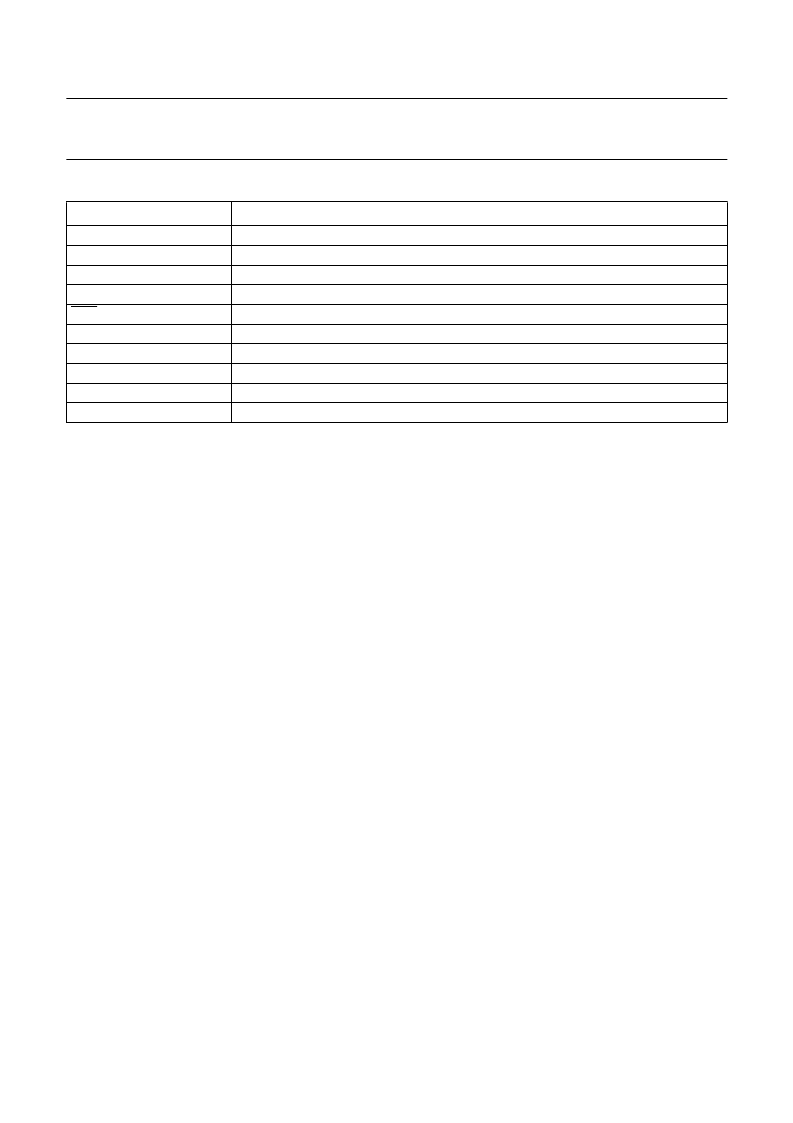- 您現(xiàn)在的位置:買(mǎi)賣(mài)IC網(wǎng) > PDF目錄382377 > PCA5010H (NXP Semiconductors N.V.) Pager baseband controller PDF資料下載
參數(shù)資料
| 型號(hào): | PCA5010H |
| 廠商: | NXP Semiconductors N.V. |
| 英文描述: | Pager baseband controller |
| 中文描述: | 傳呼機(jī)基帶控制器 |
| 文件頁(yè)數(shù): | 25/112頁(yè) |
| 文件大小: | 627K |
| 代理商: | PCA5010H |
第1頁(yè)第2頁(yè)第3頁(yè)第4頁(yè)第5頁(yè)第6頁(yè)第7頁(yè)第8頁(yè)第9頁(yè)第10頁(yè)第11頁(yè)第12頁(yè)第13頁(yè)第14頁(yè)第15頁(yè)第16頁(yè)第17頁(yè)第18頁(yè)第19頁(yè)第20頁(yè)第21頁(yè)第22頁(yè)第23頁(yè)第24頁(yè)當(dāng)前第25頁(yè)第26頁(yè)第27頁(yè)第28頁(yè)第29頁(yè)第30頁(yè)第31頁(yè)第32頁(yè)第33頁(yè)第34頁(yè)第35頁(yè)第36頁(yè)第37頁(yè)第38頁(yè)第39頁(yè)第40頁(yè)第41頁(yè)第42頁(yè)第43頁(yè)第44頁(yè)第45頁(yè)第46頁(yè)第47頁(yè)第48頁(yè)第49頁(yè)第50頁(yè)第51頁(yè)第52頁(yè)第53頁(yè)第54頁(yè)第55頁(yè)第56頁(yè)第57頁(yè)第58頁(yè)第59頁(yè)第60頁(yè)第61頁(yè)第62頁(yè)第63頁(yè)第64頁(yè)第65頁(yè)第66頁(yè)第67頁(yè)第68頁(yè)第69頁(yè)第70頁(yè)第71頁(yè)第72頁(yè)第73頁(yè)第74頁(yè)第75頁(yè)第76頁(yè)第77頁(yè)第78頁(yè)第79頁(yè)第80頁(yè)第81頁(yè)第82頁(yè)第83頁(yè)第84頁(yè)第85頁(yè)第86頁(yè)第87頁(yè)第88頁(yè)第89頁(yè)第90頁(yè)第91頁(yè)第92頁(yè)第93頁(yè)第94頁(yè)第95頁(yè)第96頁(yè)第97頁(yè)第98頁(yè)第99頁(yè)第100頁(yè)第101頁(yè)第102頁(yè)第103頁(yè)第104頁(yè)第105頁(yè)第106頁(yè)第107頁(yè)第108頁(yè)第109頁(yè)第110頁(yè)第111頁(yè)第112頁(yè)

1998 Nov 02
25
Philips Semiconductors
Product specification
Pager baseband controller
PCA5010
Table 15
Symbols used in Tables 12 to 14
SYMBOL
DESCRIPTION
SLA
R
W
ACK
ACK
DATA
MST
SLV
TRX
REC
7-bit slave address
read bit
write bit
acknowledgement (acknowledge bit = logic 0)
no acknowledgement (acknowledge bit = logic 1)
8-bit data byte to or from I
2
C-bus
master
slave
transmitter
receiver
6.9
Serial interface SIO0: UART
The UART interface of the PCA5010 implements a subset
of the complete standard as defined in e.g. the P80CL580.
6.9.1
D
IFFERENCES TO THE STANDARD
80C51 UART
The following deviations from the standard exist:
If [SM1 and SM0] = 10 then Mode 1 (8-bit data
transmission) is selected, with a fixed baud rate
(4800/9600 bits/s)
If [SM1 and SM0] = 01 then Mode 2 (9-bit data
transmission) is selected, with a fixed baud rate
(4800/9600 bits/s)
Modes 0 and 3 and the variable baud rate selection
using Timer 1 overflow is not available
The SM2 bit has no function
The time reference for modes 1 and 2 is taken from the
76.8 kHz oscillator, instead of the original
6.9.2
UART
MODES
This serial port is full duplex which means that it can
transmit and receive simultaneously. It is also
receive-buffered and can commence reception of a
second byte before a previously received byte has been
read from the register. However, if the first byte has not
been read by the time the reception of the second byte is
complete, the second byte will be lost. The serial port
receive and transmit registers are both accessed via the
special function register S0BUF. Writing to S0BUF loads
the transmit register and reading S0BUF accesses a
physically separate receive register.
f
-12
The serial port can operate in 2 modes:
Mode 1 10 bits are transmitted (through TXD) or received
(through RXD): a START bit (0), 8 data bits (LSB
first) and a stop bit (1). On receive, the stop bit
goes into RB8 in special function register S0CON
(see Figs 11 and 12).
Mode 2 11 bits are transmitted (through TXD) or received
(through RXD): a start bit (0), 8 data bits (LSB
first), a programmable 9th data bit and a STOP
bit (1). On transmit, the 9th data bit (TB8 in
S0CON) can be assigned the value of 0 or 1.
Or, for example, the parity bit (P, in the PSW)
could be moved into TB8. On receive, the 9th
data bit goes into RB8 in S0CON, while the STOP
bit is ignored (see Figs 11 and 13).
In both modes the baud rate can be selected to either
4800 or 9600 depending on the SMOD bit in the PCON
SFR. If SMOD = 0 the baud rate is 4800, if SMOD = 1 the
baud rate is 9600 with a 76.8 kHz quartz.
In both modes, transmission is initiated by any instruction
that uses S0BUF as a destination register. Reception is
initiated by the incoming start bit if REN = 1.
6.9.3
S
ERIAL
P
ORT
C
ONTROL
R
EGISTER
(S0CON)
The serial port control and status register is the special
function register S0CON (see Table 16). The register
contains not only the mode selection bits, but also the 9th
data bit for transmit and receive (TB8 and RB8), and the
serial port interrupt bits (TI and RI).
相關(guān)PDF資料 |
PDF描述 |
|---|---|
| PCA82C200 | STAND-ALONE CAN-CONTROLLER |
| PCA82C200P | STAND-ALONE CAN-CONTROLLER |
| PCA82C200T | STAND-ALONE CAN-CONTROLLER |
| PCA82C250 | CAN controller interface |
| PCA82C250U | CAN controller interface |
相關(guān)代理商/技術(shù)參數(shù) |
參數(shù)描述 |
|---|---|
| PCA5010H/XXX | 制造商:未知廠家 制造商全稱:未知廠家 功能描述:MICROCONTROLLER|8-BIT|8051 CPU|CMOS|QFP|48PIN|PLASTIC |
| PCA503HL320 | 制造商:ADAM-TECH 制造商全稱:Adam Technologies, Inc. 功能描述:ZIF FLEX CIRCUIT CONNECTOR |
| PCA503HU320 | 制造商:ADAM-TECH 制造商全稱:Adam Technologies, Inc. 功能描述:ZIF FLEX CIRCUIT CONNECTOR |
| PCA503V320 | 制造商:ADAM-TECH 制造商全稱:Adam Technologies, Inc. 功能描述:ZIF FLEX CIRCUIT CONNECTOR |
| PCA5075 | 制造商:未知廠家 制造商全稱:未知廠家 功能描述:Power Control/Management |
發(fā)布緊急采購(gòu),3分鐘左右您將得到回復(fù)。